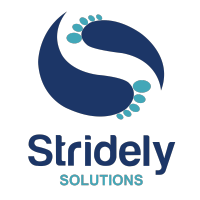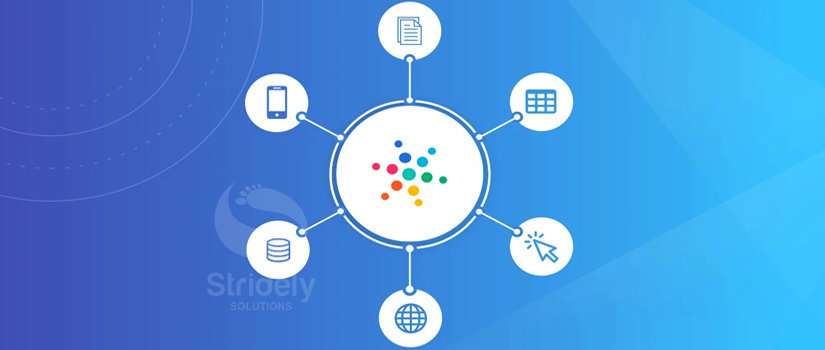In a data-driven world, an efficient process for moving and transforming data for analysis is critical to business growth and innovation. Many enterprises struggle to establish a successful analytics program due to high amount of data volumes across the organization. They struggle to accustom data from numerous unpredictable sources, but automated ELT offers a solution.
Also Read: Effective and Viable Data Strategy – The Key to Business Success in Modern Times
What is ELT?
Extract, load, and transformation (ELT) is a newer method where data is extracted from sources, loaded into the target data warehouse, and transformed in place.
Unlike ETL, ELT does not require data transformation to take place before the loading process.
With ELT, data cleansing, enrichment and transformation all occur in data warehouse storage itself. These storage systems can store unstructured data as well as execute large-scale data transformation.
How ELT Works?
ELT (Extract, Load, and Transformation) reorders the equation by shifting the transformation step at the end of the data pipeline. Let’s understand how each step is performed.
Extract — This step works similarly in both ETL and ELT data management approaches. Raw streams of data from virtual infrastructure, software, and applications are ingested either in their entirety or according to predefined rules.
Load — Here is where ELT branches off from its nemesis, ETL. Rather than deliver the mass of raw data and load it to an interim processing server for transformation, ELT delivers it directly to the target storage location. This shortens the cycle between extraction and delivery.
Transform — The database or data warehouse sorts and normalizes the data, keeping part or all of it on hand and accessible for customized reporting. The overhead for storing this many data is higher, but it offers more opportunities to mine it for relevant business intelligence in real-time.
Also Read: SAP DWC: The Future of Data Warehousing
Difference Between ETL and ELT
The primary difference between ETL and ELT is where the data is transformed and how data warehouses retain the data.
ETL and ELT differ in two primary ways. One difference is where the data is transformed, and the other difference is how data warehouses retain data.
Watch Webinar: Why Data Analytics For Business?
The choice of ETL vs. ELT for a data management use-case is essentially determined by three factors: core storage technologies, your data storage architecture, and the use of a data warehouse for your organization.
To help you pick between the two, let’s look at the differences between ETL and ELT one by one, outlining the benefits and cons of each data integration architecture.
ETL vs ELT: Side-by-Side Comparison
| Point of Difference | ETL | ELT |
| Process | Data is transformed at staging server and then transferred to data warehouse | Data remains in the database of data warehouse |
| Transformation | Transformations are performed in staging area | All Transformations are performed in the target system. |
| Load | Transformed data is loaded into a target system | Raw data is loaded directly into target system |
| Time to load | Here data is first loaded into staging area and later into target system making the process time intensive | Much faster as data is loaded directly into target system. |
| Time for Transformation | Need to wait for transformation to complete. As data size grows, transformation time increases. | Transformation time is never dependent on the size of data. |
| Storage Type | It can be used for both on-premises and cloud storage. | It is only optimized for cloud data warehouses. |
| Storage Requirement | As only transformed data is stored. Storage requirement is low | High. As raw data is also needed to be stored. |
| Compatibility with Data Lake | It is not compatible with data lake | Compatible with data lake |
| Data output | Structured data | Structured, semi-structured and unstructured |
| Data Size | Best Suited for smaller amounts of data | Suited for larger amounts of data |
| Maintenance | High maintenance due to secondary processing server and due to the need to select data to load and transform | Low maintenance with fewer system and as data is also always available. |
| Cost | High costs due to separate servers. | Comparatively lower in cost as simplified data stacks cost less. |
Benefits of ELT
With ELT, enterprises could unlock the analytical firepower and efficiency of big data. It also reduces waste, improves speed, and streamlines process by removing bottlenecks. ELT offers several advantages, including:
-
Flexibility in data
When put together with data lake ELT can ingest data in any format be it – structured, semi-structured or unstructured making it easy to integrate new and different data sources into the process.
-
High Scalability
ELT can easily adapt and quickly expand your storage in cloud whenever the amount of data use increases. Unlike in ETL, where you might have to redefine the process when it comes to manage data ingestion at large scale.
-
Speed
There is no waiting involved in the ELT process because transformation happens at the end loading the data faster and providing immediate access to information.
-
Low Cost
ELT can result in lower cost of ownership as it can easily automate the processing of onboarding data. Also, there is no requirement of upfront investment in hardware as it is cloud-based.
-
Faster Implementation
As transformation occurs after load function, it prevents the migration slowdown and enables faster implementation.
When should you use ELT instead of ETL?
Now that we know the difference between ETL and ELT, let us some cases where you can use ELT instead of ETL
If your organization has large amount of data that need to be loaded and analyzed, you will benefit from ETL. Business with large transaction volumes also can go for ELT as its process allows for quicker transfers of source data.
If you are in large scale business, where delays in day-to-day process can have adverse effects. Also, where you need to generate and use large amount of data in real-time, ELT will be more effective as it can provide real-time access for business intelligence
The Right Kind of Assistance Is By Your Side
Both ETL and ELT will improve data quality and integrity. Choosing the best solution will depend upon the various factors we discussed above.
It wouldn’t be wrong to call ELT the new monarch in data management, gradually superseding the ETL process.
To fully utilize the capabilities of ELT you need to have sources with deep knowledge, with extensive data modelling and analytics expertise. In all, a vendor who know how to build robust software systems.
Fortunately, if you choose the right vendor, you don’t need to worry about it.
Stridely Solutions have earned the unmatched competency and expertise in data integration. We can guarantee for 100% satisfaction and customized implementation when you bring us on board.


